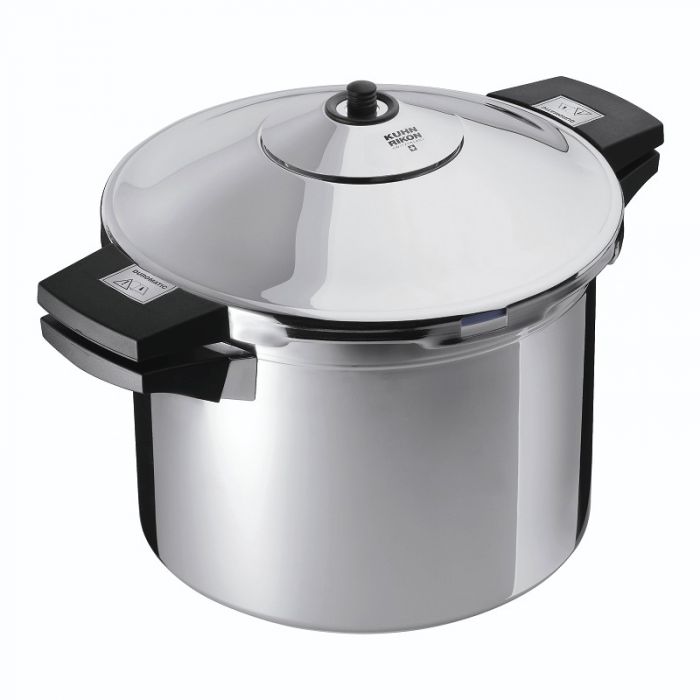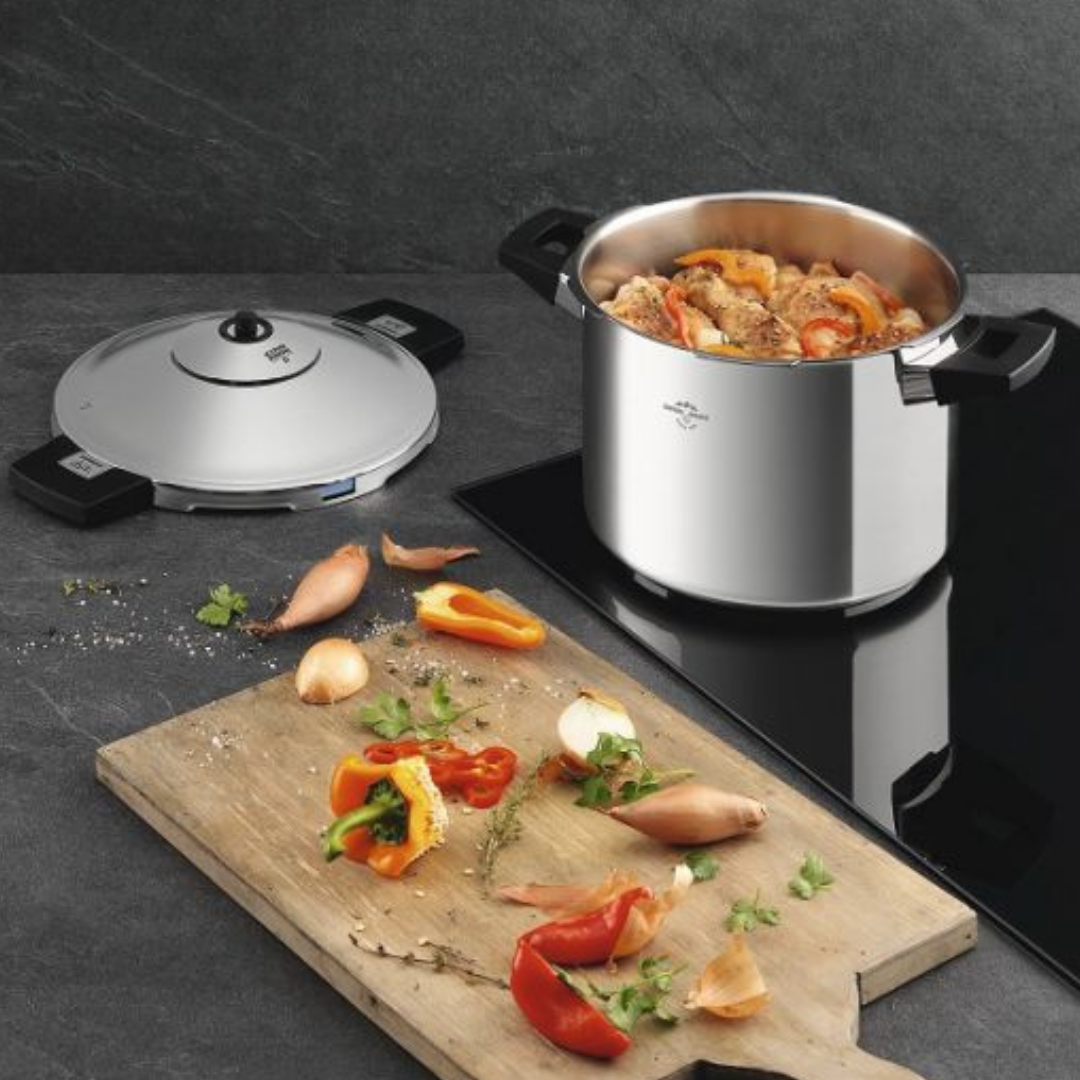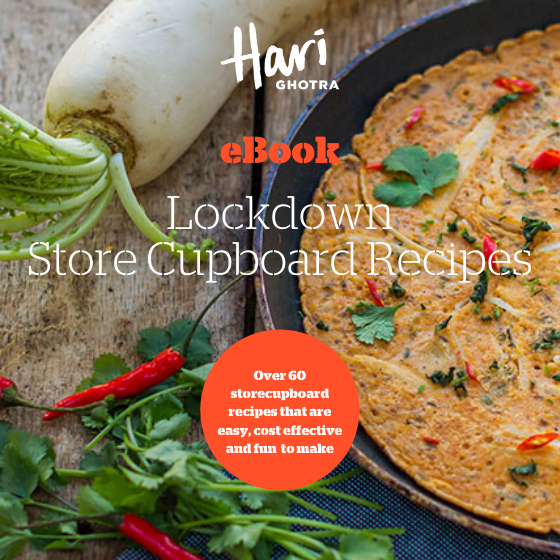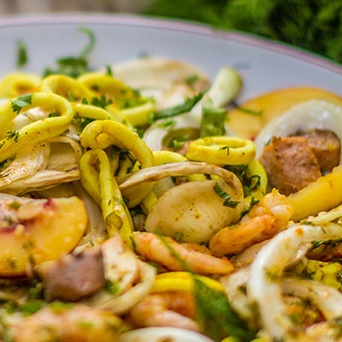If you grew up in an Indian home, then I suspect the thought of using a pressure cooker still makes you jump out of your skin or freeze like a statue unable to move with the fear that the unpredictable high pitch screech of the pressure release might go off any second. Very closely followed by the hisssss of hot steam pouring out from the nozzle on that evil contraption on your mums stove.
I still remember how it would fill our tiny little kitchen with the hot aromatic fumes that either made you run for the hills or simply burst into tears. The aftermath of cooking with the beast usually left a sequence of turmeric stains on the walls and ceiling which seemed to be a common feature in many Indian kitchens. All that said, after the trauma of the cooking we would all settle down to a luxurious meal that all came from that voluminous pan. Always accompanied with soft white fluffy rice or super soft roti’s that are still my favourite breads ever.
As I grew up I didn’t really make the connection between the food and the pressure cooker simply because as soon as I saw the pan and my mums muttering which always followed – where’s the valve for the top? I can’t find the rubber seal? and so on, but before the ignition flickered, we would scarper out of the kitchen.
Until recently I still used the pressure cooker my mum had handed down to me which had all the special freaky features mentioned above. I'm not sure why I haven't explored other options but having started to work with Kuhn Rikon I very soon discovered that I was cooking in the dark ages!

Technology has come a long way since my mum brought her pressure cooker over from India and most of the horrors and risks have been improved. No longer do you have to put up with the high-pitched whistle and most have new safety features such as locking handles that only open once the pressure has been released (genius).
Other mechanisms mean that the build up of excess pressure no longer occurs and the gush of steam being released no longer need to happen. The hissing, spitting and spluttering along with the removal of the fear that you would be scalded is a welcome change.
What is the purpose of a pressure cooker?
This pan cooks your food under pressure which reduces the time the food takes to cook. Almost the opposite of a slow cooker this is a contraption that cooks high and fast. There are many benefits for doing this and as with everything I think it’s a great addition to use as part of your food preparation.
Top 10 benefits
- Nutrition - Food cooked in this way retains most of it’s nutrients so provides more of a nutritional boost compared to foods that have been cooked for a longer time in traditional pans. The longer food is cooked, the more nutrients are destroyed.
- Flavour - Because the ingredients hold on to their nutrients and cook in a shorter time they retain a fresher taste, a more vibrant colour which means they have a better flavour. In food is left on the stove boiling away the taste is diluted so pressure cooking enhances the natural flavour of the food making it taste richer and fuller.
- Speed - The process of putting the food under pressure means that it cooks more quickly. In fact in some cases the cooking time is reduced by as much as 70% of the time. The pressure cooker can be used to whip up a nutritious and tasty one-pot meal in half the time. You can even throw in all the ingredients for casseroles and curries.
- Liquid - This is a wet cooking method but it requires only a little liquid. The cooking process means that the liquid is boiled away leaving the food with most of its nutrients intact. In dishes that are boiled for long periods of time the vitamins and minerals evaporate and become diluted large quantities of water for longer periods of time.
- Energy - This method is much more efficient than using multiple pots. You can sear and sauté in the pan and the use it as a one pot cooking method.
- Keeping it cool - in the kitchen Cooking in a professional kitchen I know how hot things can get. If you use a modern pressure cooker it retains the heat and steam so you’re not melting as you cook.
- Tidy - Gone are the days of having to clean the ceiling and tiles. Pressure cookers now keep everything inside with a secure lid, so no splutters or boiling over onto the cooker that needs cleaning up later. It’s just one pot to wash up!
- Preserving - Did you know that pressure cookers are designed to allow you to preserve food in jars at home. The larger pressure cookers allow more jars to be processed in one. This requires you to follow specific instructions to ensure it’s safe.
For many people they worry about pressure cooking because they simply don't know how or what to cook in the pan.
- Lentils
- Chickpeas
- Risotto
- Stews
- Curry
- Fish
- Vegetables
- Potatoes
You can actually cook anything in a pressure cooker. You just have to understand the process.
How does a pressure cooker work?
The cooker uses steam in a secure sealed pot to cook food. When you heat the pot the liquid boils and turns to steam, when it's trapped in a sealed pot the pressure begins to build. The high pressure cooks the food by transferring heat energy from the steam into the food. It cooks the food more quickly because it increases the boiling temperature of the liquid in the pot (because it's under pressure) and the pressure forces extra hot liquid into the food.
How to use a Pressure Cooker
- Add food & liquid in the pot - you can also use these pots to sauté onions or create sauces before adding you main ingredient.
- Close the lid, ensure valve is at the correct position
- Select pressure setting - turn heat on high and wait for the pressure to build up inside the pot.
- Start cooking under pressure - start you cooking timer. Most pressure cookers cook at 2 levels - low pressure and high pressure so depending on what you are cooking you will leave the heat high to cook under high pressure or turn it down so it simmers on low. Think about what you are cooking - a tough joint of meat will take longer then potatoes.
- Release pressure
Hari’s Tip Tips:
- Size - Go for a 6-8L model for family cooking
- Use it - Get used to using one and do some reading about the cooking method. To start with use recipes designed specifically for the pressure cooker. Once you have a bit more experience you will be free styling.
- Don’t over fill your cooker – Most cookers recommend that you half fill them. This is because food will expand as it cooks (ie beans, lentils etc)
- Wet cooking - This is a wet cooking method so you do need to add lots of water about 250ml should be plenty. Very little, if any, liquid evaporates with this cooking method so the aim is to keep the flavours concentrated and strong. If you add too much liquid you’ll be washing the flavours away so remember if using wine, a little goes a long way!
- Browning - Just as with slow cooking, colour is flavour so yes brown your onions, meat etc in the pan itself will benefit the dish. Add a little water to deglaze and simmer until the liquid reduces to the desired amount. Add your ingredients back in and cook.
- Ingredients/size - Think about the ingredients you are using – denser ingredient need to be cut smaller so they cook at the same time as the other ingredients in the pan. Try to understand that some ingredients may need to be added later which is amazing – modern cooers allow you to reduce the pressure very quickly so you can add other bits into the pan – how cool is that?
- Finishing the dish - If you want to you can also give your dish a blast in the oven just to finish it and add a little colour
- Timing is everything with pressure cooking. One the target pressure has been reached the pan then is reduced to allow the pressure to remain for the cooking time – a few minutes can make a big difference with pressure cooking.
- Delicate ingredients - These ingredient as with any cooking need to be added at the end, herbs, delicate aromatics and dairy won’t do too well under pressure!
- Seasoning - Check the seasoning at the end, it’s always best to under season during cooking taste and adjust as required.




Elisabeth
reply